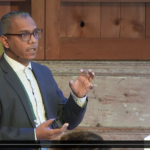
STEPHANIE BARRETT
Quantum Consumer Solutions
SIDDHARTH KANORIA
Quantum Consumer Solutions
[s2If is_user_logged_in()]DOWNLOAD PDF
[/s2If]
Equality, inclusion, and representation are increasingly acknowledged as core tenets of prosperous countries, cities, and organizations. We know that equality is essential, and we also know equality must be enacted on all fronts. Brands and other social organizations are increasingly recognizing their role as social stakeholders, committed to building a society in which both people and their businesses can thrive in the long-term. Quantum Consumer Solutions and Unilever have partnered on this program of four projects to understand and reduce stereotypes and improve representation. We used a mixed-methods approach, including semiotics, qualitative research, expert interviews, springboards, and internal organizational change to improve inclusivity in communications, pack, and products. Readers can expect to learn why we recommend an ‘inside-out’ approach that combines organizational change...

